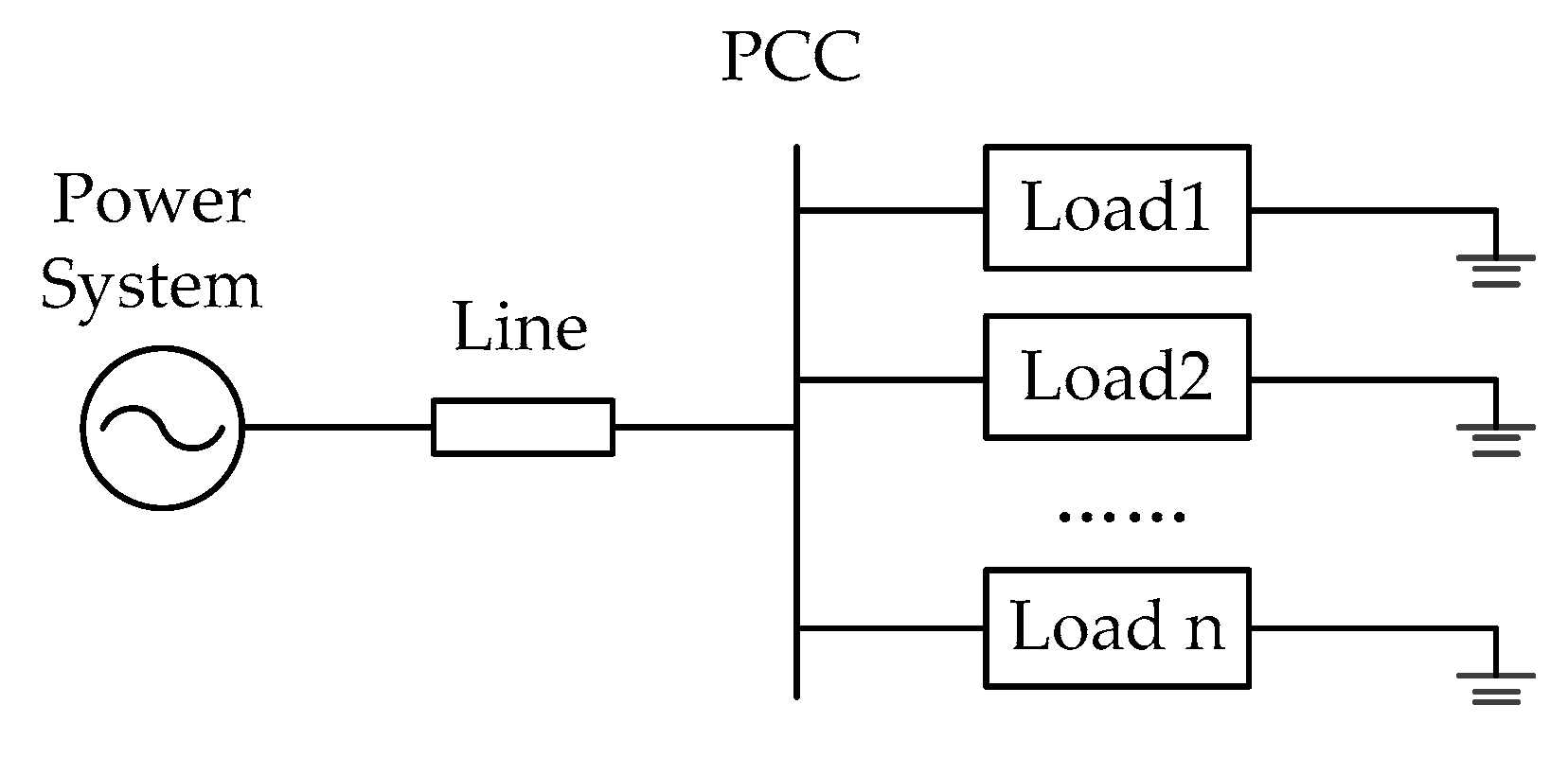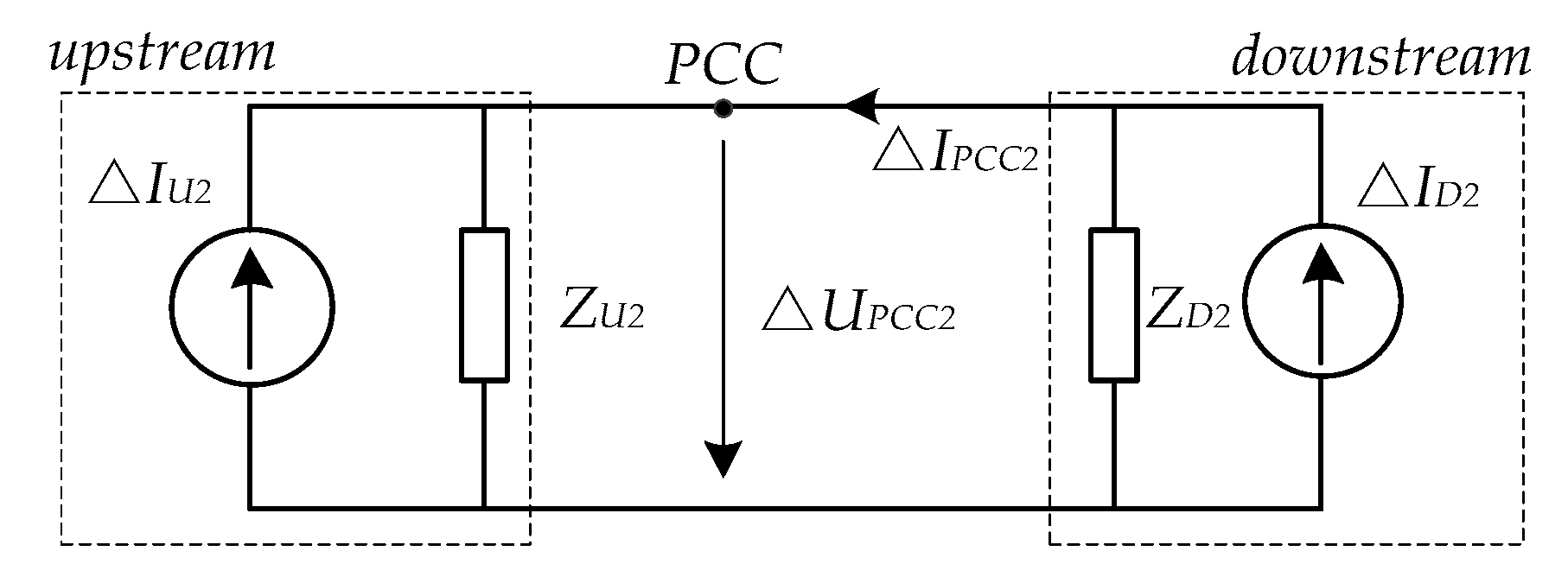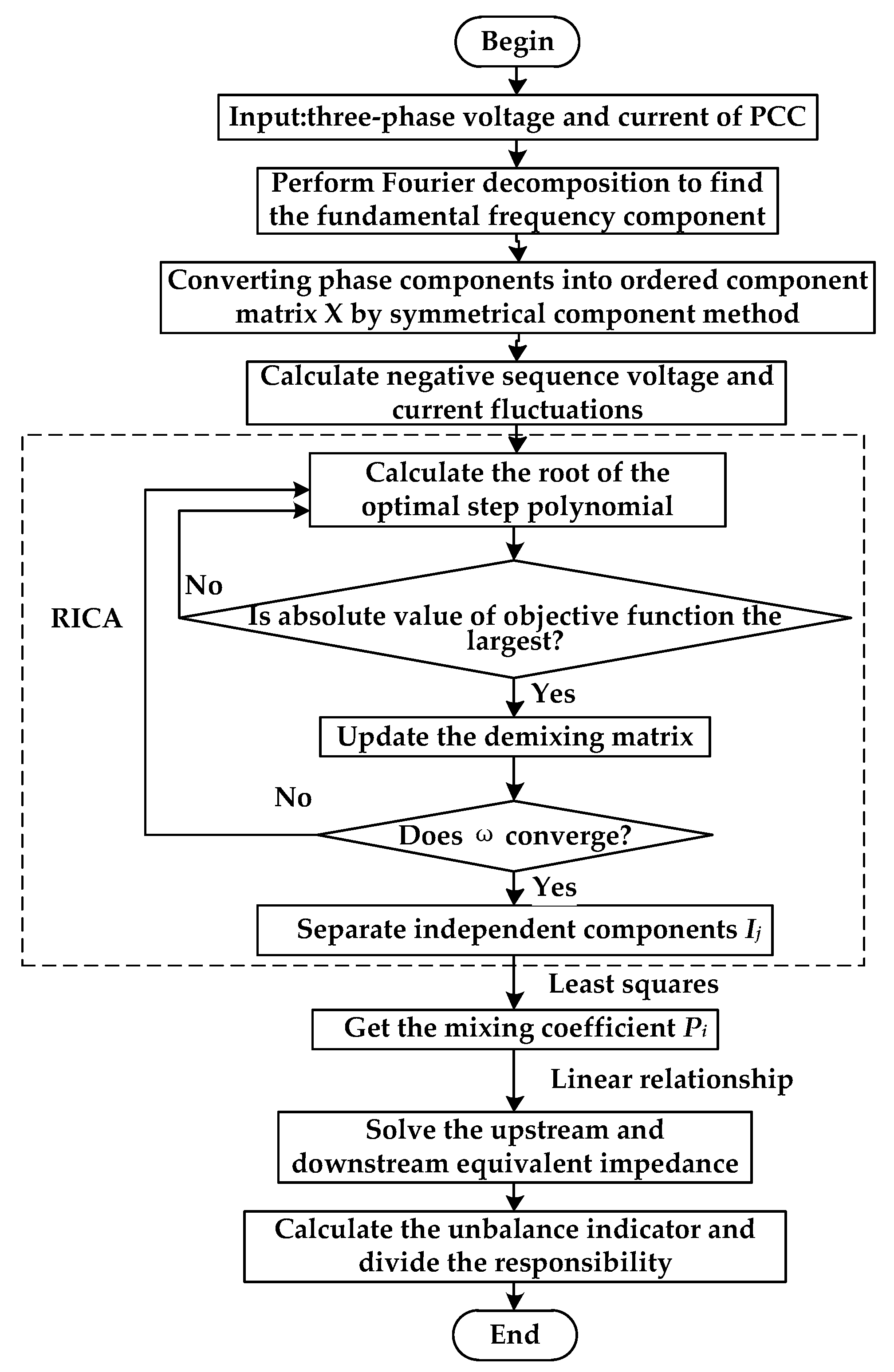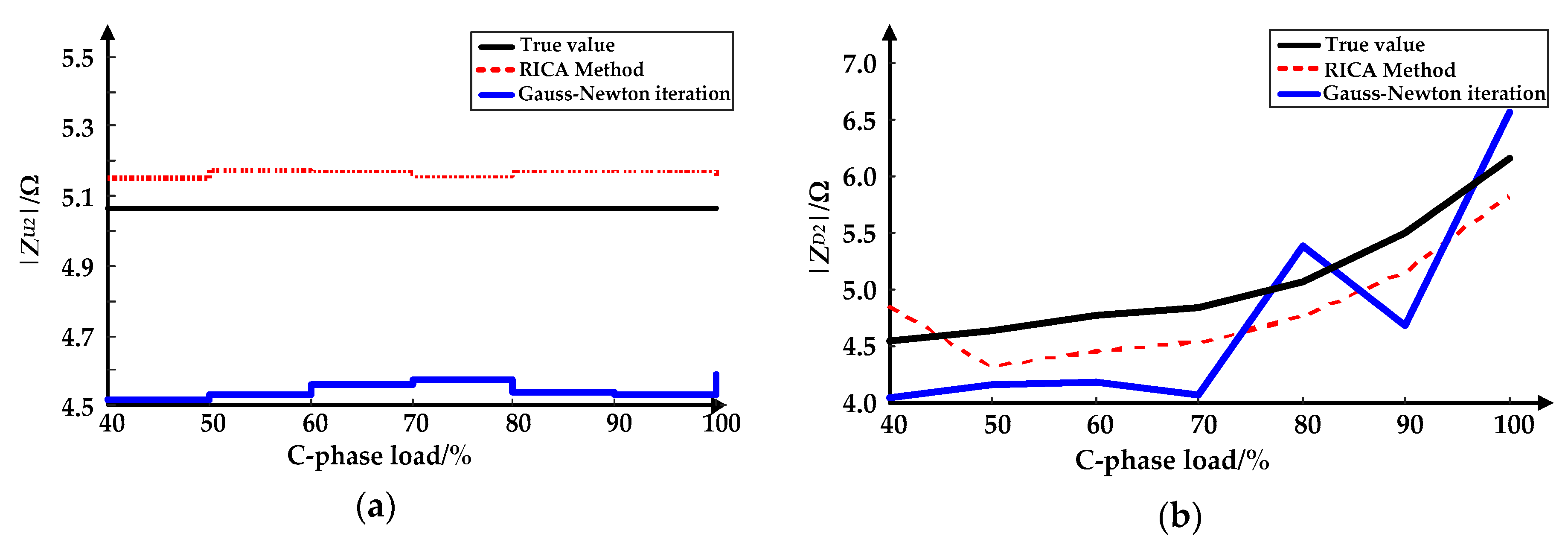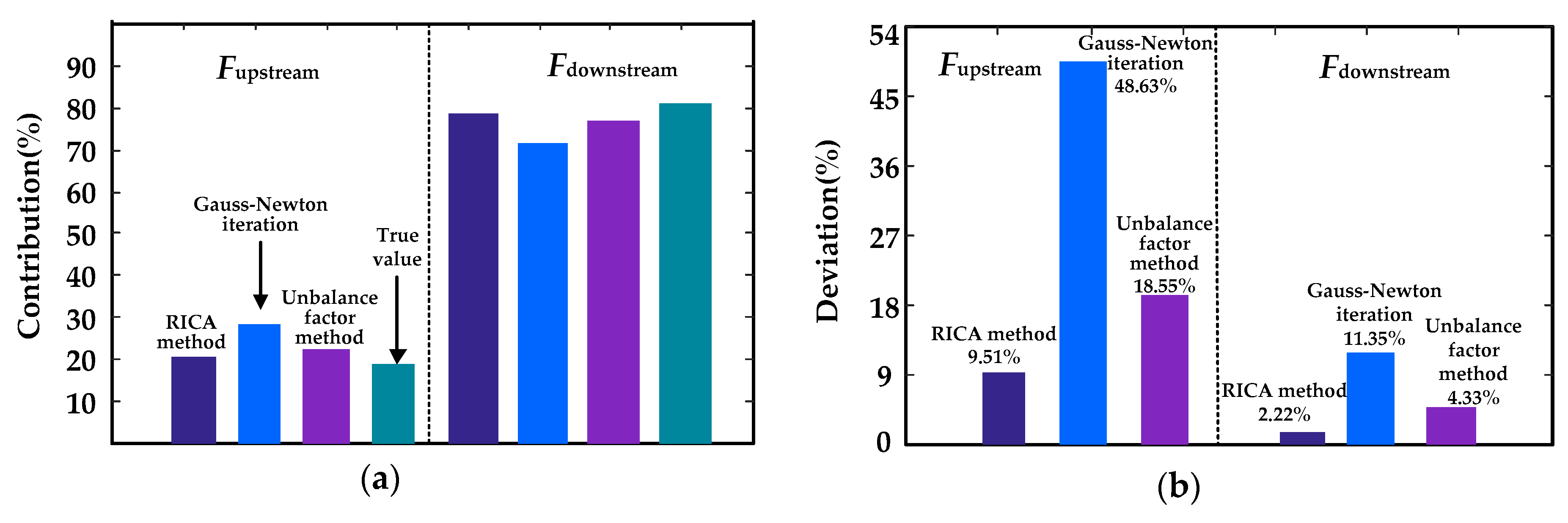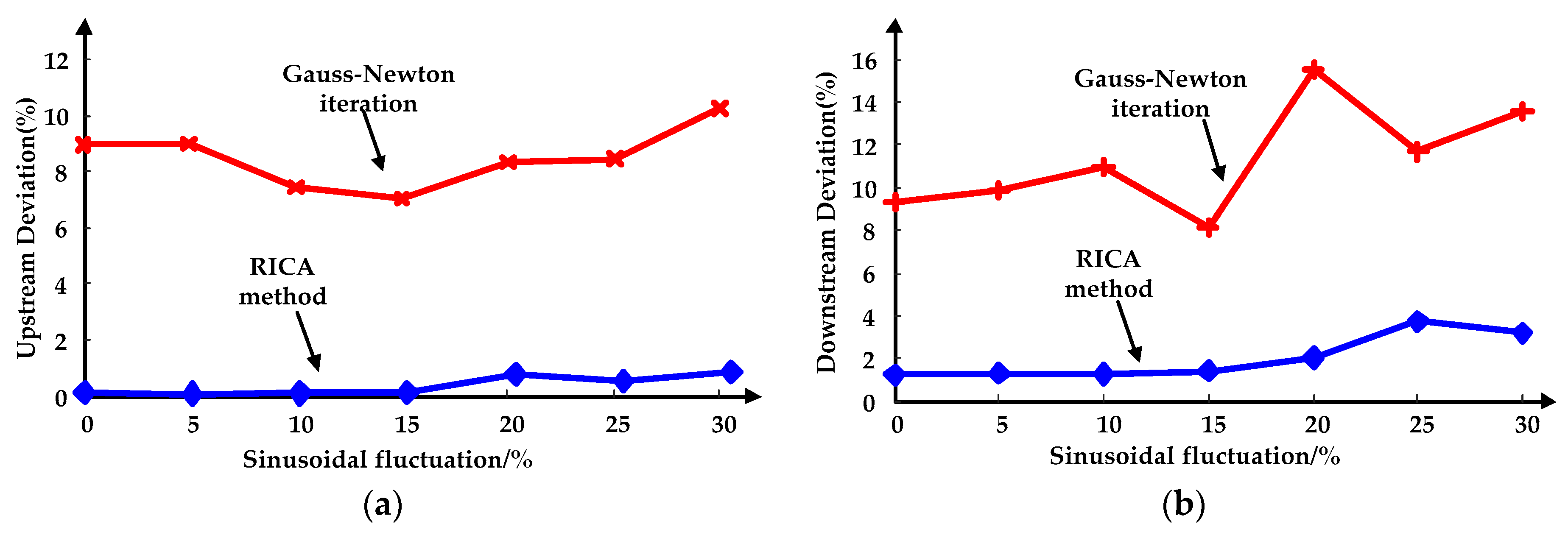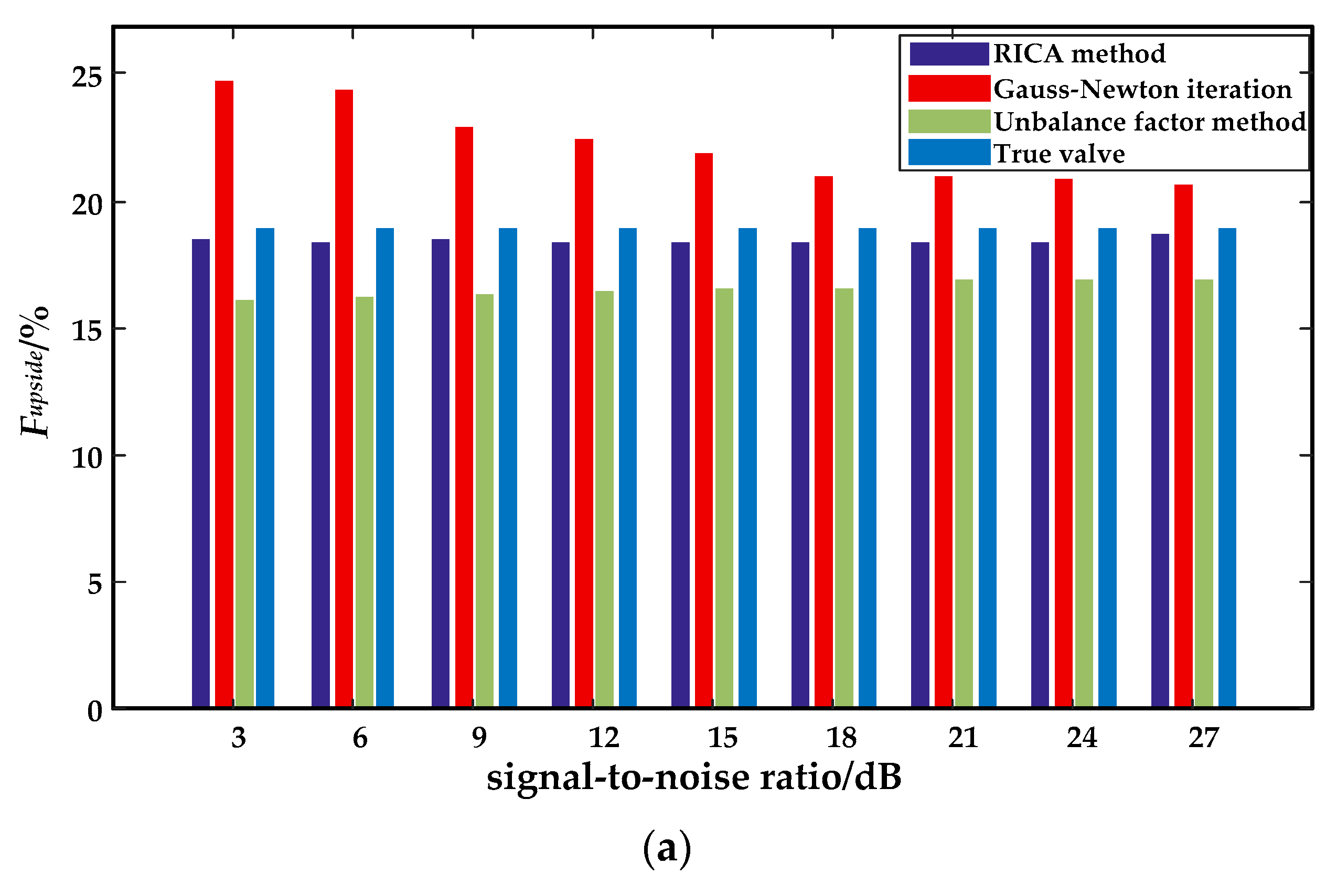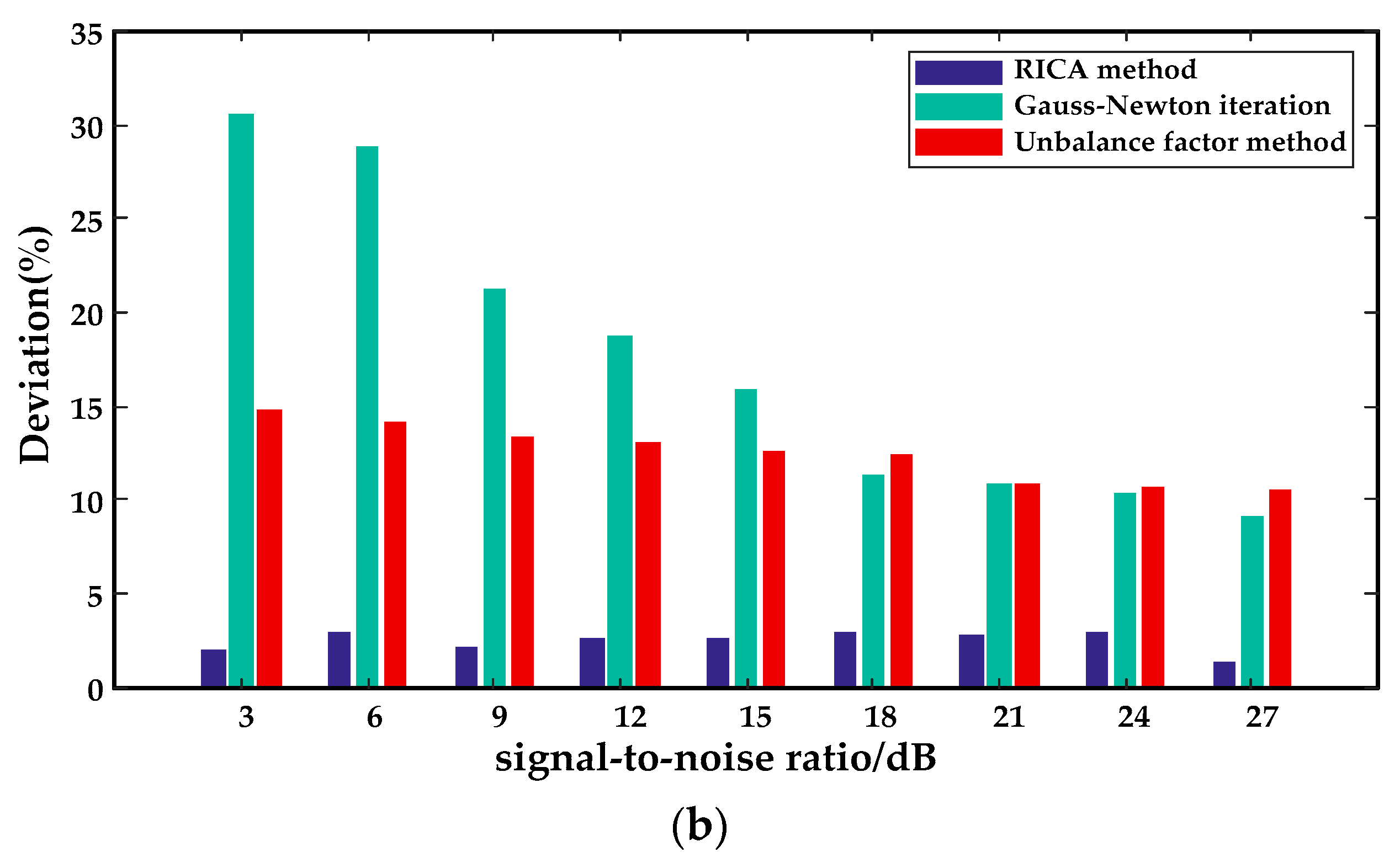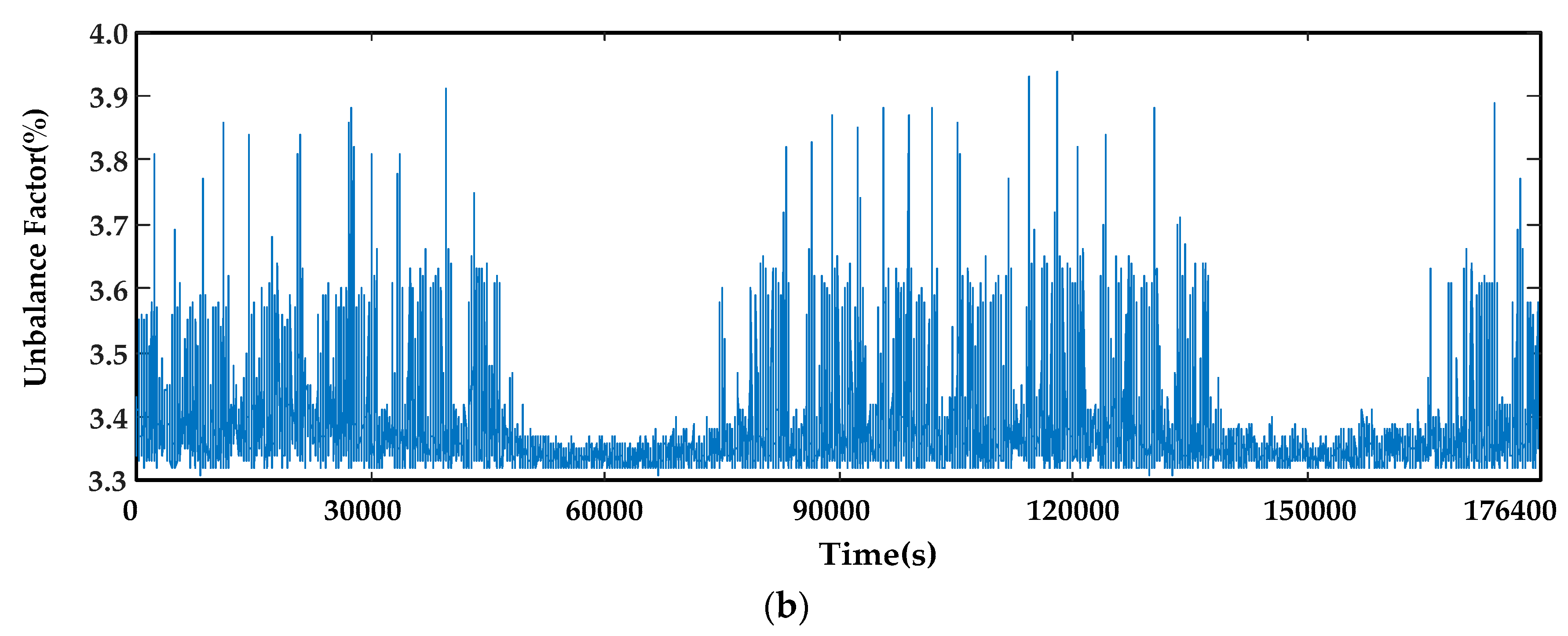1. Introduction
With the deepening of reform, electric retail companies will enhance their competitiveness by improving service levels, providing value-added services and better-quality power. As one of the main power-quality problems, voltage unbalance has caused widespread concern among power sellers and consumers [
1,
2,
3,
4]. Voltage unbalance refers to the phenomenon that the voltage amplitude of the fundamental frequency is not equal, or that the phase is offset in a three-phase power system [
5,
6]. In a power system, voltage unbalance is the result of a combination of numerous unbalanced sources. Unusual access or operation of sources, lines, and loads can cause voltage unbalance, such as single-phase ground faults, wire break resonance, single-phase load access, asymmetrical wiring distribution of transformers, and so on [
1]. Voltage unbalance has many negative effects on distribution networks and customers. For example, transmission line losses increase and grid operations overheat, reducing operating efficiency and equipment life, and increasing equipment maintenance costs. In 2008, the International Electro-Technical Commission released regulations about the limits of unbalanced loads accessing high voltage, medium voltage and low voltage systems [
7]. When an unbalance at the point of common coupling (PCC) exceeds the standard in a power system, the unbalanced source needs to be located and the penalties should be quantified that grid companies and customers should be exposed to by unbalanced responsibility division calculations.
At present, the research on voltage unbalance mainly focuses on the division of unbalanced responsibility, unbalanced source location, calculation of node unbalance [
1,
2,
3,
4,
5,
6,
7,
8,
9,
10,
11,
12,
13,
14,
15], and research on voltage unbalance mitigation measures. The assessment of the contribution of unbalanced sources at the point of common coupling is the premise of responsibility division and governance. Mahyar Abasi proposed to establish a model in the n-node radial distribution network to analyze the impact of loads, lines, and sources on the system unbalance, but the topology of the system needs to be known [
4]. According to circuit topology, Sun Yuanyuan has derived the general formula for the division of unbalanced sources responsibility, which only requires knowledge of the voltage and current at the PCC [
5,
6]. In [
8], the three-phase power flow method was used to evaluate the effects of unbalanced sources and loads on the unbalance factor. In [
9], the three traditional methods of IEC (International Electrotechnical Commission)—three-phase power flow, and the conforming and nonconforming current methods—are used to calculate the effect of unbalanced sources responsibility division, and the advantages and disadvantages of each method are discussed. Milanovic calculated the range of voltage unbalance factor by Monte Carlo simulation, and estimated the unbalance from historical data even where the test data were missing [
10]. A method has also been proposed to improve the computational efficiency of unbalance factor by transforming the square root operation into a trigonometric equation of geometry, then approximating the trigonometric equation by algebraic operations [
11]. Jayatunga proposed deterministic methodologies to assess constituent components of postconnection voltage unbalance levels at the point of evaluation in interconnected and radial networks [
12,
13]. The above scholars have provided many methods for the calculation of unbalance factors and contribution determination, but there are still many shortcomings.
In view of the shortcomings of the above literature, this paper proposes a method based on robust independent component analysis (RICA) for unbalanced sources responsibility division. According to the weak correlation between the negative-sequence voltage and the current fluctuation of upstream and downstream at the point of common coupling, the independent component of the negative-sequence voltage and current fluctuation could be obtained by RICA. The blind source mixing coefficient matrix can be obtained according to the least squares method. The equivalent negative-sequence impedance on both sides can be calculated by using the linear correlation between the mixing coefficients. Finally, according to the principle of partial pressure, the unbalance contribution of the upstream and downstream at the PCC could be obtained. Determined through simulation experiments, the estimated value of system impedance and the result of responsibility division calculated by the method proposed in this paper were more accurate than traditional methods. At the same time, the method had a strong anti-interference ability, and system noise and fluctuation had little influence over the result error.
The main contents of the paper are summarized as follows. In
Section 2, the unbalanced source equivalent model is established and a responsibility division index is proposed. In
Section 3, the equivalent current source and equivalent impedance are solved using RICA and a least squares method, then dividing the unbalanced responsibility. The calculation steps are summarized in
Section 4. The simulation and field data analysis results are given in
Section 5. The conclusion is summarized in
Section 6.
4. Calculation Steps and Flow Chart
The analysis steps for determining the unbalanced source responsibility division based on robust independent component analysis (RICA) are summarized as follows.
Step 1: Measure the three-phase voltages and currents of the point of common coupling. The fundamental frequency component of the voltage and current at the PCC can be obtained by discrete Fourier analysis. The phase component is converted into the sequence component by the symmetrical component transformation, as shown in Equations (5) and (6).
Step 2: Calculate the fluctuation of the negative-sequence voltage and current, separate the real part and the imaginary part, and write the standard form of the blind source separation matrix, as shown in Equation (4). The Norton equivalent current is separated using RICA. The matrix of mixing coefficients is calculated according to Equation (24). The equivalent impedance magnitude is obtained according to the linear relationship between the mixed matrix elements and the upstream and downstream equivalent impedances, as shown in Equation (28).
Step 3: Calculate the negative-sequence voltage contributed by the upstream and downstream at the PCC point according to Equations (7) and (8). The unbalanced responsibility division is performed according to the projection ratio of the negative-sequence voltage of the unbalanced sources of upstream and downstream on the total negative-sequence voltage of the PCC.
In summary, the calculation steps are shown in
Figure 4.
6. Conclusions
This paper proposes a new method for the division of unbalanced responsibility at the PCC. The method only needs to use the voltage and current measured by the power-quality loggers at the point of common coupling as the input data, and does not need to know the power system topology.
The negative-sequence voltage and negative-sequence current fluctuation of PCC were separated by robust independent component analysis, and the equivalent impedances of upstream and downstream sides were calculated according to the least squares method. The unbalance contributions of the upstream and the downstream were calculated according to the unbalance indicators.
Through simulation analysis, the system impedance estimated by the method proposed in this paper was more accurate, and was closer to the true value than the traditional method. As the background noise and system fluctuations increased, the measurement error also increased, but the measurement error of the proposed method was much smaller than the traditional method and shows good anti-interference ability. When calculating the equivalent impedance and unbalance factor of the actual high-speed rail station, the equivalent impedance estimate was relatively stable, and the unbalance was in line with the actual situation. The division of responsibility for multiple unbalanced sources is the research direction to explore. in the future.
